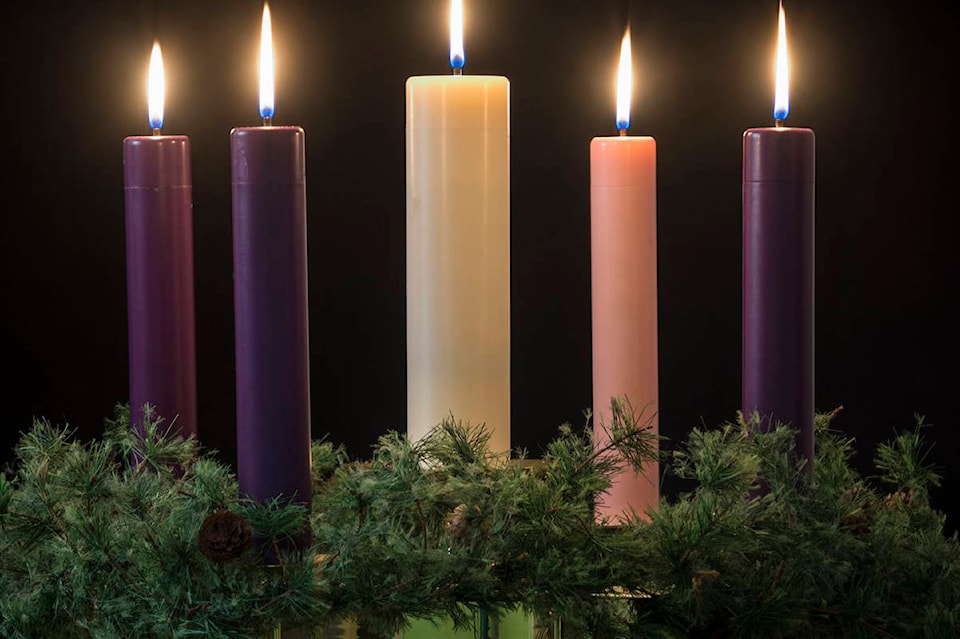Yme Woensdregt
We can see the bright lights all around us at this time of year. Wonderful cascades of light are making our neighbourhoods more beautiful as homeowners decorate their houses and lawns. The lights seem to dance in the night sky, icicles hanging from the gutters and brilliant dioramas on lawns giving the illusion of movement as the lights flicker off and on in wondrous patterns. In picture windows, we see Christmas trees garlanded with strings of coloured lights.
Our cities join in with displays on the streets, in the parks, and on the light poles. We are celebrating a festival of light as we edge towards the winter solstice. It seems to be a natural human impulse to find ways to lighten the darkness as the days grow shorter and the nights longer.
That seems to be even more true in these waning days of 2020. It’s been such a difficult year, and as we come to the end of the year, we need to shine with a little extra brightness. It seems to be a profoundly human impulse rooted deep within us to brighten up the darkest days, and it’s such a wondrous thing to see.
Particularly this year, there seems to be a stronger desire not just to see the light, but to be the light. We seem to be learning that if there is to be light, we need to be the ones who shine in the darkness of this pandemic.
I am also very mindful that a light seems to be dawning with the advent of a vaccine which promises to bring an end to this time. I watched the news reports of the first people to be vaccinated, and I was struck by the light in the eyes of those receiving the vaccine, and even more profoundly, in the eyes of the health care workers who gave them the vaccine. The promise is so bright, and we rejoice.
I believe that religious festivals of light are rooted in this human impulse to shine as the nights grow longer and darker.
Christmas is a good example. There is no good reason to celebrate the birth of the Light of the World at this time of year. After all, nobody knows when Jesus was born. The Bible doesn’t say. In fact, the earliest Christians didn’t even celebrate Christmas.
The first written record we have of Christmas being celebrated on December 25 comes from the year 336. That’s a whole 340 years after the actual event.
Why that date? It was the date on which the Roman Empire celebrated the rebirth of the Unconquered Sun (Sol Invictus) which marked the return of longer days after the winter solstice. It came at the end of the festival of Saturnalia, a popular festival marked by feasting and giving gifts.
Until the year 312, Christianity was illegal. It seems such a natural thing that as Christianity became legitimate, the church would want to celebrate its own festival at the same time as Saturnalia. What better festival than to celebrate the birth of the Light of the World for Christians. So it began for the church.
Other religions also celebrate festivals of light at this time of year.
Millions of Hindus, Sikhs, and Jains across the world celebrate Diwali, a festival of lights. Each candle symbolizes the power of light to conquer darkness. For Hindus, this festival is also a time to contemplate and dispel the darkness of ignorance.
Jews celebrate the eight–day and night festival of Hanukkah. A candle is lighted on each day in the menorah, until the festival ends with a blaze of light. This celebration is a time for faithful Jews to reflect on their calling to be light in the world.
Indigenous peoples light the sacred fire at the beginning of any ceremony or sacred event. The light of the fire is a spiritual doorway that opens to a spiritual realm. The sacred fire is never left alone, it is watched and attended to by a Fire Keeper. People gather around the fire for ceremony and conversation.
Kwanzaa is a Swahili word that means “first” and signifies the first fruits of the harvest. It is becoming more common to celebrate this festival at the end of the year, which incorporates practices of an ancient spirituality from Africa and elsewhere. Light is used in this celebration as a symbol of the seven principles—Unity; Self-Determination; Collective Work and Responsibility; Cooperative Economics; Purpose; Creativity; Faith. Each principle is symbolized with a candle. A kinara is the candle holder that holds the seven candles. Each night a candle is lit, and families talk about one of the seven principles. This is done each night until all the candles are lit.
Christmas, of course, celebrates the birth of the Child who is worshipped as the Light of the World. That’s why, for Christians, Advent is a season of growing light. We light one candle each week until the world blazes with the light which shines in the darkness.
It strikes me that the world’s religions have internalized this deep and profound human impulse to beat back the darkness. It is not only the deepening darkness of nights which grow longer. It is also about illuminating the darkness of ignorance and evil.
It bears witness, I think, to our need to be the light. We are the ones who shine with the light. Unfortunately, we also have the power to extinguish the light through wars, inquisitions, prejudice, hatred, and fear.
But a higher and nobler impulse is to use our power to shine more brightly in our world. We join hands with people of other faiths, and people of no faith, people of good will, to seek the light. Our brightly lit neighbourhoods reminds me of our impulse to do so. My prayer is that we continue to shine with light and with love all year long.
Yme Woensdregt is a retired Anglican priest living in Cranbrook
